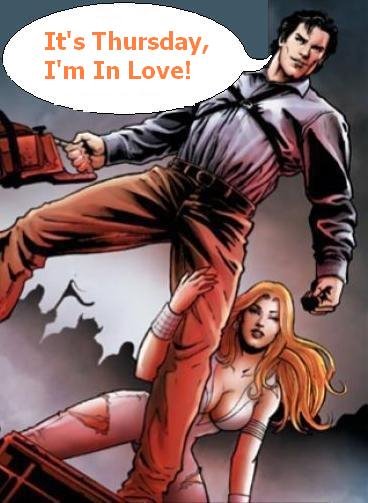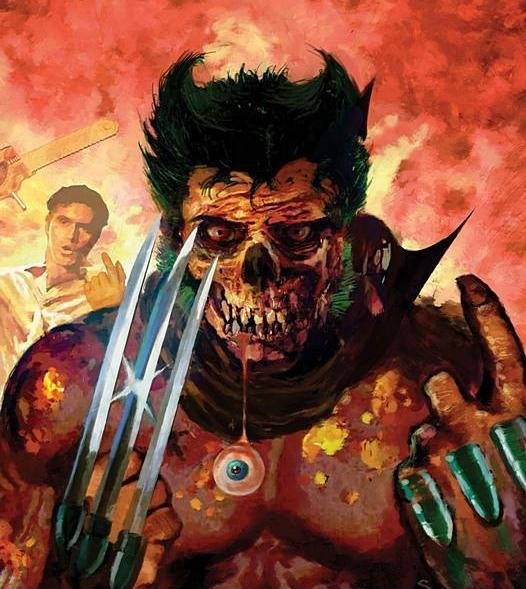THE MINDS BEHIND ‘30 DAYS OF NIGHT’
With the film about to hit, the creators of the hit vampire comic and its movie adaptation talk about making bloodsuckers scary again and a possible sequel
By Kiel Phegley | Posted October 18, 2007 4:40 PM |
Ask actor Josh Hartnett what the attraction is to vampire movies, and he drives a stake right to the heart of the matter.
“The vampire tradition and mythology has been ingrained in all of us from a very young age,” explained the actor in advance of this weekend’s movie version of the wildly popular, IDW vampire comic 30 Days of Night. “I was probably 8 or 10 years old when I saw my first scary vampire movie. I went over to my buddy Nick Kelly’s house, and we watched ‘Salem’s Lot.’ He was allowed to watch these movies, and I wasn’t so we’d sneak away to watch them at his house. Then I’d have to make the two-door journey back home, and I’d just haul ass terrified back to my bedroom.”
 It’s that feeling of terror that Hartnett and director David Slade helped to reintroduce to vampire films in “30 Days of Night,” aided ably by horror comics mainstay and co-creator of the original series Steve Niles, who also co-scripted the movie’s screenplay.
It’s that feeling of terror that Hartnett and director David Slade helped to reintroduce to vampire films in “30 Days of Night,” aided ably by horror comics mainstay and co-creator of the original series Steve Niles, who also co-scripted the movie’s screenplay.“I can probably name two scary vampire movies since 1922, which are ‘Nosferatu,’ and the last time I was scared by a vampire movie was the TV version of ‘Salem’s Lot’ that Tobe Hooper did with the kid scratching at the window. That’s scary,” Niles explained. “But since then, vampires have just become characters. They have human traits and on ‘Buffy,’ girls are dating them. Now there’s a CBS show where they’re detectives.”
It was that glossed-over image of the bloodsucking fiends that made the idea of the remote Alaskan city of Barrow overrun by vampires during the month of the year where its citizens remain in total darkness a hard sell. As Niles described, the seemingly unbeatable concept of the mythological monsters on a feeding frenzy through a month of sunless days took nearly 15 years to sell as a movie.
“It started as a movie pitch, and I pitched it for about five years to absolutely blank faces,” he said. “One reason I think comics are so popular for pitching movies is that it spells it out for people. I’m a lifetime horror fan, so I knew what I had in my mind when I said ‘vampires.’ But then it dawned on me that maybe to these execs, when I say, ‘Vampires walking across the tundra,’ maybe they picture like 100 Bela Lugosis in satin capes running across like bats. That is kind of stupid. I think the comic spelled it out for them and they saw the vampires looked different and acted differently—because when you pitch something verbally, there’s no controlling what people see in their minds. I’ve gone back now, and every single movie pitch that was on my list is now a comic book, and five of them have sold as movies.”
Of course, selling a pitch and making a movie are two very different animals, as the forces that brought “30 Days of Night” to the screen included acclaimed indie director David Slade (“Hard Candy”) and executive producer Sam Raimi, whose work in both the horror genre and the comic adaptation world have made him a household name for fans.
“The biggest reason I wanted to do the film was because of David Slade’s vision,” said Hartnett. “He came up to Minnesota where I’m from and laid out what he wanted the movie to be like and the scenes. It was like nothing I’d ever heard of before—kind of visceral and dark, but also something that’s artistic.
“Sam Raimi has a real tongue-in-cheek approach to horror,” continued Hartnett, “and obviously this is a little different, but if you can trust anybody as far as the genre of horror goes, I think he’s read the book from cover to cover.”
But in the fast-paced world of sharing credits and paying compliments that is the comics-to-film business these days, Slade himself had much to say for the work Niles and specifically 30 Days artist Ben Templesmith did to create the new visions of vampires. “I’ve become very good friends with Ben. It was [his art that] drew me to the graphic novel at the very beginning,” the director recalled. “The first thing I said was that I’m not interested in Barrow, Alaska, as much as I’m interested in Ben’s Barrow.”
And from the sleepy blue hues of Templesmith’s paintings to the exaggerated approach to vampires and their fangs he brought to his characters, all of the artist’s quirks were given screen time. “There’s a fine line between realism and Ben’s work, and there was a point at which you couldn’t go any further,” Slade noted. “With Ben’s vampires in particular, what hooked me was the end where the alpha vampire says, ‘We’ve hidden behind the folklore and the myth. We’re the real thing.’”
That on-screen admission of the many sillier vampire characteristics “30 Days” eschews is a central piece of the many frightening twists and unexpected in-jokes the movie promises when it rolls film on Friday. “In ‘30 Days,’ all those myths exist,” Niles said. “Count Chocula exists. Buffy exists. Dracula exists, and that’s their cover. As long as vampires are silly, nobody suspects them.”
“I like the fact that the characters in this film are real characters with real problems, so you can hopefully relate to them and follow them,” added Hartnett. “If you find yourself relating to them, you can more easily follow them into the realm of the supernatural.”
And one way in which readers have related to the comic is by following the story of the citizens of Barrow out of 30 Days of Night and into several spinoffs, from Dark Days to Bloodsucker Tales. With such a wealth of material, the possibility of film sequels came up. However, Slade was quick to note that the changes made to bring the property to screen—from the vampires having their own, screeching language to subtle shifts in the plot—meant sequels were as tricky a beast as vampires.
“When it comes to sequels, we have to say A) ‘Is this pragmatic?’ and B) ‘Will this set of values apply to the comics that exist?’” the director explained, promising that the entire creative team would be ready to continue reinventing vampires in one form or another—as long as there were plenty of viewers ready to be scared. Judging from Hartnett’s anecdote, even 8-year-olds who aren’t allowed to watch such films will be waiting.



No comments:
Post a Comment